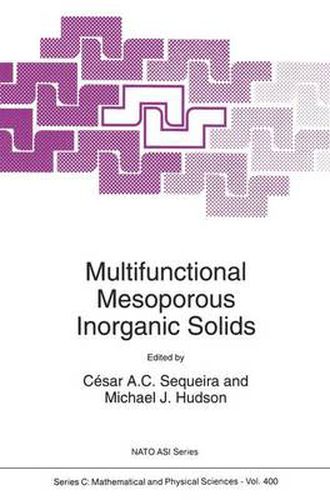Readings Newsletter
Become a Readings Member to make your shopping experience even easier.
Sign in or sign up for free!
You’re not far away from qualifying for FREE standard shipping within Australia
You’ve qualified for FREE standard shipping within Australia
The cart is loading…






This title is printed to order. This book may have been self-published. If so, we cannot guarantee the quality of the content. In the main most books will have gone through the editing process however some may not. We therefore suggest that you be aware of this before ordering this book. If in doubt check either the author or publisher’s details as we are unable to accept any returns unless they are faulty. Please contact us if you have any questions.
There is a great deal of interest in the general subject of porous inorganic materials in regard to their use as sorbents or catalysts. The solids may be microporous, mesoporous, or macroporous. Often there is a range of pore sizes within any given solid, and so there is special interest in the synthesis, characterisation and application of solids having well-defined pores. The first part of the book deals with the theory and practice of the measurement of pore-size distributions. Part II goes into porous crystalline materials. The zeolites are, by definition, microporous, but it is important to understand the mechanisms whereby such crystalline porous materials are formed, so as to suggest methods for the synthesis of mesoporous materials. Pillared layered solids are investigated in Part III. There are clear indications that the current generation of microporous materials may be developed to give PLS which combine micro and mesoporosity, while a totally mesoporous solid may not be far off. part IV covers sol-gel methods, where important new developments mean that oxides can be produced with high purity and with well-defined pore sizes. Methods of characterising the materials are also studied, with solid state NMR (including 27Al-NMR), X-ray and neutron scattering, pulsed ESR, and electrokinetic potential measurements being discussed in Part V. Finally, applications are discussed in Part VI.
$9.00 standard shipping within Australia
FREE standard shipping within Australia for orders over $100.00
Express & International shipping calculated at checkout
This title is printed to order. This book may have been self-published. If so, we cannot guarantee the quality of the content. In the main most books will have gone through the editing process however some may not. We therefore suggest that you be aware of this before ordering this book. If in doubt check either the author or publisher’s details as we are unable to accept any returns unless they are faulty. Please contact us if you have any questions.
There is a great deal of interest in the general subject of porous inorganic materials in regard to their use as sorbents or catalysts. The solids may be microporous, mesoporous, or macroporous. Often there is a range of pore sizes within any given solid, and so there is special interest in the synthesis, characterisation and application of solids having well-defined pores. The first part of the book deals with the theory and practice of the measurement of pore-size distributions. Part II goes into porous crystalline materials. The zeolites are, by definition, microporous, but it is important to understand the mechanisms whereby such crystalline porous materials are formed, so as to suggest methods for the synthesis of mesoporous materials. Pillared layered solids are investigated in Part III. There are clear indications that the current generation of microporous materials may be developed to give PLS which combine micro and mesoporosity, while a totally mesoporous solid may not be far off. part IV covers sol-gel methods, where important new developments mean that oxides can be produced with high purity and with well-defined pore sizes. Methods of characterising the materials are also studied, with solid state NMR (including 27Al-NMR), X-ray and neutron scattering, pulsed ESR, and electrokinetic potential measurements being discussed in Part V. Finally, applications are discussed in Part VI.